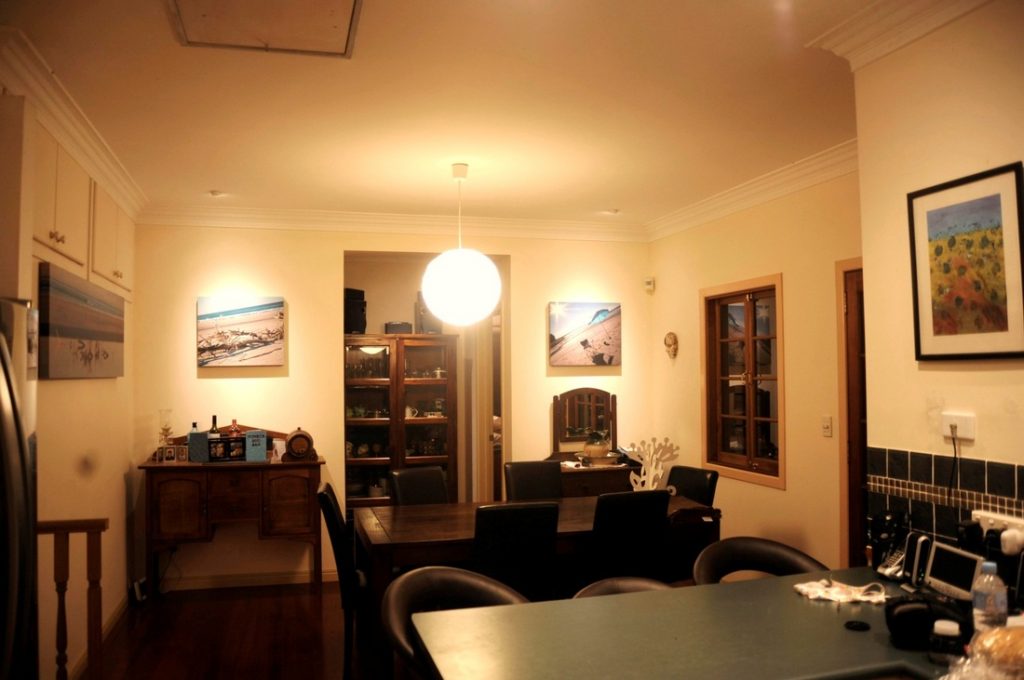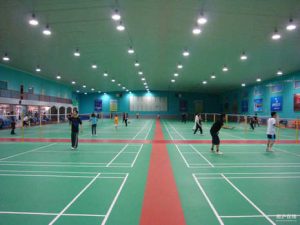For general lighting, what people need is mainly a light source close to sunlight, so white LED has become an important indicator of lighting technology. However, there is still a long distance between white LEDs and general lighting requirements, and there are still many problems that need to be resolved.
1. Low luminous flux and high price.
For example: a single 1W LED device has a luminous flux of about 25lm. The price of good quality is more than $8, and the price of poor is $4. The luminous flux of 25lm is too small for general lighting. The luminous flux of an ordinary 60W incandescent lamp is greater than 700lm. In other words, to replace traditional lighting, multiple LED devices are required, plus lighting circuits, lamp housings, and lamp caps. Etc., such a high cost is the biggest problem for white LEDs in general lighting.
2. Poor color rendering.
Currently, white light LEDs generally use blue light emitting LEDs to superimpose yellow light emitting yttrium aluminum garnet (YAG) phosphors excited by blue light to synthesize white light. Since its light emission spectrum only contains the two main waves of blue and yellow, it has the problem of high color temperature and low color rendering index (that is, the color of the illuminated object is distorted), which does not meet the general lighting requirements. The sensitivity of the human eye to chromatic aberration is much higher than the sensitivity to light intensity. For lighting, the color rendering of the light source is often
More important than luminous efficiency.
3. The problem of light decay.
Since lighting sources have higher requirements for brightness than display sources, the power of white light LEDs should be as large as possible. When working at high currents, as the ignition time increases, the LED itself will suffer from light decay plus the deterioration of phosphors and packaging materials. The luminous flux drops, and the lighting field passes
It is often defined that the luminous flux drops to a certain percentage of the initial value as the effective life of the lamp has ended, so the life of the actual power white light LED is greatly shortened.
4. Heat Generated problem
Since the surface area of the LED chip is less than 1mm2, the current density is large during operation, and the heat in the diode is serious. If it is not drained, the chip will be damaged. Because the lighting requires a combination of multiple LEDs, the LED density is high and the LED is lit for a long time. Temperature rise is inevitable, so heat dissipation must be strengthened, which makes the volume of the LED light source larger and makes the design of the lamp shape and structure more difficult.
5. Optical system problem.
In order to facilitate the replacement of the original incandescent lamps and fluorescent lamps, in the early stage of the promotion of new products, the lamp caps and lamp dimensions should be interchangeable with the original light sources as much as possible, and the original lamps should be used as much as possible. Since the LED lamp is a combination of multiple light-emitting diodes, the light-emitting surface is neither a uniform surface light source nor a simple point light source, but a collection of multiple light-emitting centers. The light distribution curve is different from the traditional light source, making it in many ways It is difficult to achieve the best lighting effect in some lamps. In addition, there are many other problems that need to be solved jointly by the optoelectronic industry and the lighting industry.
Although the current white LED is still a long way from general lighting, with the start of semiconductor lighting projects in various countries, under the attention and promotion of the government, and the joint efforts of the scientific and technological circles and the industry, we believe that in the near future In the future, semiconductor LED lights will surely enter millions of households.
Advantages of LED light source
The LED that came out in the 1960s has achieved rapid development in just over 40 years. The first batch of products appeared in 1968, and the luminous flux of an LED with a working current of 20mA was only a few thousandths of a lumen. The corresponding luminous efficiency is 0.1lm/W, and there is only one red light with a light color of 650nm. In the early 1970s, the technology progressed rapidly, with the luminous efficiency reaching 1lm/W, and the colors expanded to red, green and yellow. Since its inception, LED has been developing at a rate of 20 times increase in brightness every 10 years, and the price has been reduced to 1/100 of the original rate.
With the invention of new materials and the improvement of light efficiency, the power and luminous flux of a single LED light source are also increasing rapidly. Originally, the driving current of a general LED was only 20mA. In the 1990s, the driving current of an LED light source code-named “piranha” increased to 50mA-70mA, and the driving current of an LED light source code-named “Barracuda” reached 300mA-500mA.
In particular, the successful development of white LEDs in 1998 made the application of LEDs change from a simple logo display
The display function has taken a substantial step towards the lighting function. Compared with traditional light sources, LED light sources have the following advantages: ultra-long life, up to tens of thousands of hours, and traditional light sources are generally thousands of hours. The structure is firm, without tungsten filaments, glass bulbs and other easily damaged parts, and has extremely high Earthquake resistance. The response speed is fast, and the luminous flux rise time is short. Low requirement on lighting circuit, easy to realize dimming and intelligent control. Resistant to switch impact, suitable for frequent switching occasions. High efficiency and energy saving, the existing luminous efficiency has exceeded that of incandescent lamps, and the theoretical luminous efficiency can reach 200lm/W. It does not contain harmful substances such as mercury and lead, no pollution, and it is green and environmentally friendly.
Improve the lighting efficiency of existing lighting equipment
Clean lighting fixtures regularly:
When the lamp has not been cleaned for a long time, the lamp tube and reflector will gradually accumulate dust, which will reduce the output efficiency. Therefore, the lamp should be cleaned regularly at least every three months to maintain the output efficiency of the lamp.
Regularly replace old lamps:
When incandescent lamps and fluorescent tubes are used to 80% of their life, the output beam is reduced to about 85%, so they should be replaced before the end of their life. For office buildings with a huge amount of lighting, regular replacement of light sources is particularly important. In addition to saving labor costs for replacing lamps and improving indoor illuminance, it can also save electricity.
It is advisable to choose light colors for ceilings and walls:
The indoor walls, ceilings, and curtains adopt light color series such as white, milky white…. The light reflection effect is better, which can improve the light diffusion effect and save electricity.
Replace low-efficiency light sources and lamps
Replace incandescent lamps with fluorescent lamps
Incandescent lamps consume about three times the power consumption of fluorescent lamps. For places with long lighting time or infrequent switching actions, such as living rooms, bedrooms, etc., removing the incandescent lamp and switching to a fluorescent lamp series light source can immediately save electricity. the goal of.
Substituting white fluorescent tubes for daylight color fluorescent tubes. White fluorescent tubes have lower color rendering and color temperature than daylight colors, but have higher luminous efficiency. If daylight color tubes are replaced with white tubes, electricity can be saved by about 10%.
Replace two 20W tubes with 40W fluorescent tubes
The unit full beam output (light source efficiency) of a 40W fluorescent tube is 77.5Lm/W, while 20W is only 59 Lm/W. If you replace two 20W tubes with a 40W tube, you can save power by 31%.
Replace mercury lamps with LED lamps
The color rendering of mercury lamps is 40, and the light source efficiency is 52 Lm/W, while the color rendering of LED lamps is 80, and the light source efficiency is 98 Lm/W. If the mercury lamp is replaced by a sodium gas lamp, in addition to the improvement of color rendering, the efficiency is It is also greatly improved and can save more than 50% of electrical energy.
Replace gorgeous and complex lamps with simple and beautiful lamps
Overly gorgeous and complicated lamps are not only expensive, but also difficult to maintain, and also waste electricity. They should be replaced by lamps with simple and beautiful structures.
Replace traditional ballast with electronic ballast
Electronic ballast lamps have many advantages: for example, no starter, immediate start, no flicker, less heat generation… etc. Compared with traditional ballasts, it can reduce power consumption by 20%~30%, so when you buy lamps , High-quality lamps with electronic ballasts should be preferred.
Take effective lighting methods
Full lighting and local lighting cooperate with each other
It is an uneconomical waste of electricity to improve the general lighting in the room to match specific activities or tasks such as reading, drawing, makeup… etc. Therefore, for visual activities that require higher illuminance, generally you only need to use reading lamps, desk lamps, etc. as local lighting to provide the required illuminance.
Proper illuminance
Various places have their own appropriate illuminance. Excessive or insufficient illumination is improper. Excessive illumination wastes electricity, and low illumination hinders vision and health and affects work efficiency.
Using natural light sources
Daylight utilization
In areas with sufficient sunlight, if daylight can be used effectively, a large amount of electricity for lighting will be saved. At present, the use of daylight in homes and factories is more common, but the use of daylight in office buildings with larger lighting power consumption is significantly insufficient. The high-frequency dimmable electronic ballast has superior quality. If it can be combined with the automatic photosensitive control system, it will greatly help the use of daylight, the promotion of electricity saving, and the reduction of electricity expenses. If there is good daylighting, adding an automatic sensing dimming control system can save electricity bills by up to 50%.
Building lighting
(1) Using clear glass as the window material can obtain sufficient natural light source.
(2) The use of high window design can provide deep and uniform daylight.
(3) Use light guide plate, light guide tube and other auxiliary daylight to achieve energy saving effect.
(4) Light colors are used for indoor wall curtains, etc., which can improve the light diffusion effect in the house and save energy
(5) Keep the window glass clean to improve the lighting effect.
Energy saving method using power distribution and control system
Reasonable lamp and switch circuit configuration
Unreasonable lighting and circuit configuration will result in waste of electric energy. For example, connecting the lamps in the window area and the lamps in the non-window area into the same switch circuit. If you want to turn off the lamps in the window area when the daylight is sufficient, it will cause the non-reliable Insufficient illuminance in the window area. Therefore, in the design of lighting power distribution system, the following items should be given priority:
- Each independent space should have its own switch.
- The open office should be divided into several areas according to the attributes of the space, so that each area can independently control the lamps.
- The periphery and core area of a large space need to be controlled independently.
Automatic control of lighting system
The lighting system adopts automatic control method, which can eliminate the energy loss caused by human negligence. The control method is as follows:
- Give regular control to specific spaces and working hours.
- Use various sensors to sense light, human body, etc. or use the opening and closing of the door to activate or close the lamp.
- Use the daylight automatic sensing system to adjust the output of the light source and the action of on and off, which can make full use of natural light to achieve the purpose of saving electricity.
- Use computers to control the overall water supply, lighting, electricity, security, air-conditioning, etc. (intelligent building).




